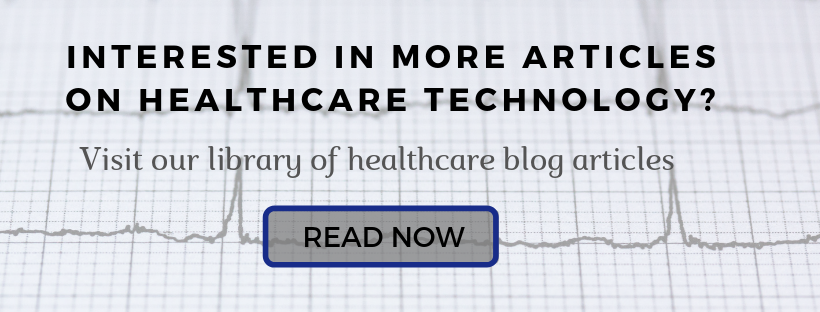There is little dispute that medical practitioners are among the most highly educated members of our society. However, much of their extensive education is focused on diagnosing illness, often with the aid of high-tech diagnostic tools. While the increase in technology comes with enormous benefits, many are also concerned that the concentration on technical results can cause medical staff to miss important cues and can lead to a lack of empathy in healthcare.
Medical schools certainly encourage their students to develop a good bedside manner, but there is little formality in place. While it is difficult to teach, having empathy can make the difference between being a good practitioner and a mediocre one. Are we ready to give up on empathy in healthcare in the technological era? Or is there still room for it alongside our EHRs and AI-powered applications?
The decline of empathy in healthcare
Many new medical professionals enter the field with limited social skills. The extensive use of technology has permeated medical offices and is ubiquitous in virtually all hospitals. Combine these items with a busy and overworked staff, and patient care suffers in subtle ways.
 Both medical schools and practicing professionals can train to be more observant of patient emotions and expressions over and above what the patient is actively saying. Loss of empathy within staff is detrimental to patients. Technology has reduced the need for patient contact and few medical offices still use simple patient interfaces. Holding a patient’s hand while measuring heart rate or taking blood pressure allows a practitioner to establish eye contact or another non-verbal communication paths with the patient. A probe or machine does not.
Both medical schools and practicing professionals can train to be more observant of patient emotions and expressions over and above what the patient is actively saying. Loss of empathy within staff is detrimental to patients. Technology has reduced the need for patient contact and few medical offices still use simple patient interfaces. Holding a patient’s hand while measuring heart rate or taking blood pressure allows a practitioner to establish eye contact or another non-verbal communication paths with the patient. A probe or machine does not.
In a 2015 article published in the journal Contemporary Nurse, patient simulation mannequins used in many clinical courses were found not conducive to the development of empathy in student nurses.
Throughout history, nursing has involved a literal hands-on approach to patient care. While such devices are good technological teaching tools, they add to the decline of empathetic care. Other teaching avenues must take up the slack.
Patients have emotional needs
In the swirl of technological instruments, results, and measurements, it is easy to forget about the emotional needs of the patient. Stories abound about patients being led into their doctor’s office to be told – in clinical terms and with little emotion – that they have cancer. This life-altering diagnosis is often delivered factually with little regard for the devastation it can cause in both patient and associated loved ones. In hospital settings, this information is sometimes delivered with several other clinicians present – especially if the situation is dire. It is difficult for a patient to relate to several clinicians simultaneously when that patient has an emotional need for one-on-one empathy and understanding.
Also, immediately after a serious diagnosis, many patients enter into a kind of emotional shock. It is during this time that little will be remembered of a clinician’s conversation discussing options. This is the time that practitioner empathy can make a difference. Understanding and addressing the patient’s emotional need at this point can be rewarding to both patient and practitioner and also result in a better outcome for the patient.
Can empathy be learned?
 Obviously, medical professionals cannot fully empathize with a patient to the degree where the clinician actually experiences the patient’s suffering. However, empathy can occur when the practitioner focuses attention on the patient and allows emotional communication.
Obviously, medical professionals cannot fully empathize with a patient to the degree where the clinician actually experiences the patient’s suffering. However, empathy can occur when the practitioner focuses attention on the patient and allows emotional communication.
Tuning in to patients’ emotions does not necessarily mean the practitioner must feel the emotions, but it involves listening intently, usually with minimal questioning. It requires that clinicians temporarily put their technology aside and concentrate fully on the patient’s emotional needs. While questioning is an important part of patient interface and diagnosis, there are times when the practitioner must take the patient’s emotional state into serious account. Asking a patient how he/she/they feels will not usually be a good indicator of the patient’s emotions, especially if the patient has recently received a devastating diagnosis. However, communicating with the patient about actual feelings can often be enlightening.
Empathy in the age of AI and EHRs
In recent years, many artificial intelligence (AI) tools have been introduced to the healthcare industry with a goal to assist day-to-day decision making and reduce potential for human error. AI algorithms can process large amounts of information. However, getting the raw data into the system should not interfere with or diminish the role of the practitioner.
A medical office that relegates data collecting to paramount importance in patient visits might find itself sacrificing quality of care. Physicians who spend the bulk of patient interface time entering data in an EHR will not be communicating well or empathizing with a patient. Thus, the very act of inputting data into an AI system, even one that may aid in diagnosis or treatment, can diminish the patient/practitioner interface.
Empathy is valued in all patient interactions and the human touch is a great icebreaker for quality communication. While AI has come a long way in the recent past, it still has a very long way to go in recognizing emotions and relaying them to the practitioner.
In the future, AI and EHR systems will undoubtedly take a more prominent role in the medical community. A computer, sifting through mountains of data with various algorithms can make many good decisions. But, for the foreseeable future, there will be a need for involved human interaction, both to confirm AI output and to provide empathy and care to patients.
Blending technology with empathy in healthcare
A skill such as empathy requires face-to-face interactions and meaningful discussion. To build empathy, one must cultivate an ability to sense other people’s emotions and imagine what feelings a person might be experiencing. For medical professionals, empathy is the art of sensing a patient’s emotions by listening, reading body language and other non-verbal cues, and responding with an appropriate blend of concern and professionalism.
The conundrum, of course, is augmenting what clinicians do with the powerful algorithms of AI technology, without diminishing the physician’s ability to relate to the patient. Blending the power of AI with the sophistication of human perception can greatly enhance a practitioner’s effectiveness.
While technology has played a huge role in expanding diagnosis and treatment of patients, it is important to place human emotions up front. While technology may help resolve a problem, it cannot erase or mediate a person’s emotions. But another human, one with sensitive emotional nature and a high degree of empathy, can help.
Related articles
If you enjoyed this article, you might like one of our other articles on healthcare technology.
- How Hospitals Can Improve the Way Providers Interact with Technology
- How Hospitals Can Use Inventory Management Analytics
- How Analytics Can Help Eating Disorder Treatment
Ready for a test drive of our healthcare analytics software?
- How Technology Can Improve Physician Performance Measurement - July 29, 2019
- Patient Perspectives on Technology in Healthcare - June 6, 2019
- Empathy in Healthcare: Is There Room for It in the Technological Era? - April 8, 2019




